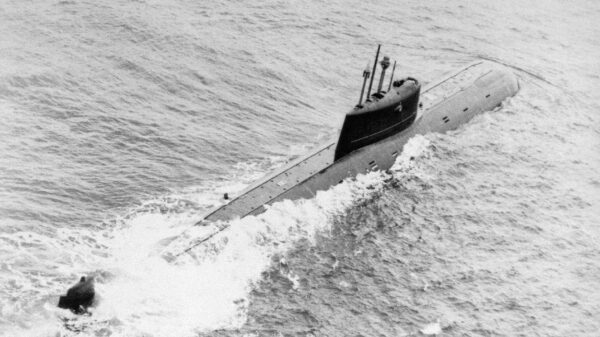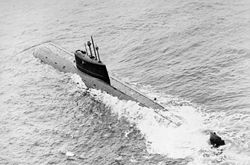
The frigid, shadowy depths of the Barents Sea quietly preserve the remnants of a ship that once pushed the boundaries of underwater combat.

The Soviet submarine K-278 Komsomolets, known for its record-breaking deep dive and formidable nuclear arsenal, met a fiery end on April 7, 1989, during its first operational patrol.

The tragic incident not only took the lives of 42 sailors but left an environmental specter that haunts the waters to this day.
The Komsomolets’ story began in the mid-1980s when the Soviet Union launched what was then the zenith of submarine technology.

With a titanium hull and the ability to dive deeper than any of its American counterparts, the Soviet Navy saw K-278 as virtually invulnerable.
Its MGK-500 “Skat” sonar system, advanced nuclear reactor, and armament with Shkval supercavitating torpedoes made it a formidable threat in underwater combat.
A fire that started in the seventh aft chamber during a dive in the Norwegian Sea spiraled out of control.
The crew’s desperate attempts to surface and fight the blaze proved futile. According to reports, even the ship’s rubber anechoic coating tiles melted off due to the extreme heat.
The Komsomolets eventually succumbed to the flames and sank to the ocean floor, its reactor and nuclear-armed torpedoes in tow.
After its sinking, several expeditions between 1989 and 1998 attempted to secure the submarine’s reactor against radioactive release.
Russian sources allege the discovery of evidence suggesting “unauthorized visits to the sunken submarine by foreign agents” during this time.
The Komsomolets tragedy not only exposed the risks associated with cutting-edge military technology but also raised questions about the Soviet Navy’s preparedness and the safety of its crews.
The aftermath revealed a lack of training, inadequate repair facilities, and a disregard for safety that, as one author put it, continued “to create victims” of the system.
Decades later, the ghost of K-278 still looms beneath the waves. A Norwegian expedition in 2019 recorded radioactive cesium levels near the wreck at nearly a million times higher than normal seawater.
The same study, however, also suggested that this contamination posed no significant risk to the region’s fish or seafood due to dilution across the vast depths and currents of the Barents Sea.
Relevant articles:
– K-278: The Russian Submarine the U.S. Navy Couldn’t Match Sunk with Nukes Aboard, The National Interest
– Their System Still Needs Victims .. ., U.S. Naval Institute
– Komsomolets Wreck Site Reveals High Radiation Levels 30 Years After Soviet Sub Sinks, Radio Free Europe/Radio Liberty
